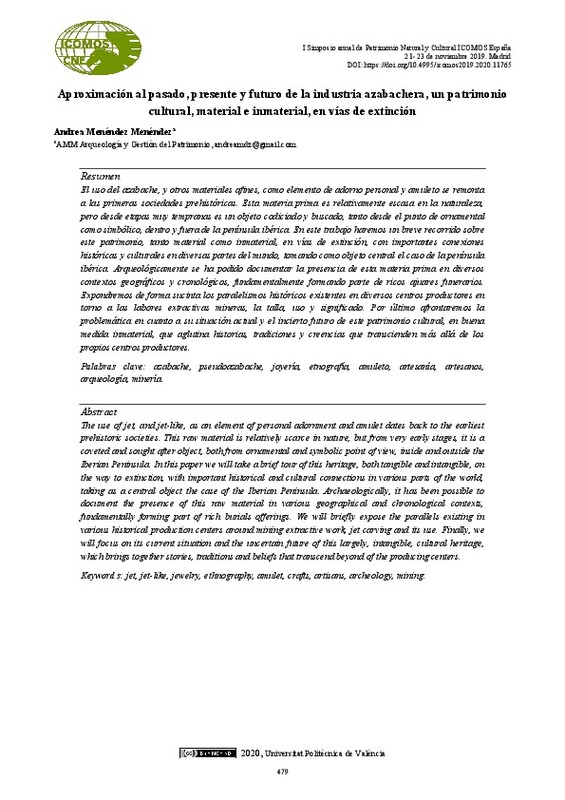JavaScript is disabled for your browser. Some features of this site may not work without it.
Buscar en RiuNet
Listar
Mi cuenta
Estadísticas
Ayuda RiuNet
Admin. UPV
Aproximación al pasado, presente y futuro de la industria azabachera, un patrimonio cultural, material e inmaterial, en vías de extinción
Mostrar el registro completo del ítem
Menéndez Menéndez, A. (2021). Aproximación al pasado, presente y futuro de la industria azabachera, un patrimonio cultural, material e inmaterial, en vías de extinción. En I Simposio anual de Patrimonio Natural y Cultural ICOMOS España. Editorial Universitat Politècnica de València. 479-492. https://doi.org/10.4995/icomos2019.2020.11765
Por favor, use este identificador para citar o enlazar este ítem: http://hdl.handle.net/10251/160340
Ficheros en el ítem
Metadatos del ítem
| Título: | Aproximación al pasado, presente y futuro de la industria azabachera, un patrimonio cultural, material e inmaterial, en vías de extinción | |
| Autor: | ||
| Fecha difusión: |
|
|
| Resumen: |
[EN] The use of jet, and jet-like, as an element of personal adornment and amulet dates back to the earliest
prehistoric societies. This raw material is relatively scarce in nature, but from very early stages, it is ...[+]
[ES] El uso del azabache, y otros materiales afines, como elemento de adorno personal y amuleto se remonta
a las primeras sociedades prehistóricas. Esta materia prima es relativamente escasa en la naturaleza,
pero desde ...[+]
|
|
| Palabras clave: |
|
|
| Derechos de uso: | Reserva de todos los derechos | |
| ISBN: |
|
|
| Fuente: |
|
|
| DOI: |
|
|
| Editorial: |
|
|
| Versión del editor: | http://ocs.editorial.upv.es/index.php/icomos_es/icomos2019/paper/view/11765 | |
| Título del congreso: |
|
|
| Lugar del congreso: |
|
|
| Fecha congreso: |
|
|
| Tipo: |
|









